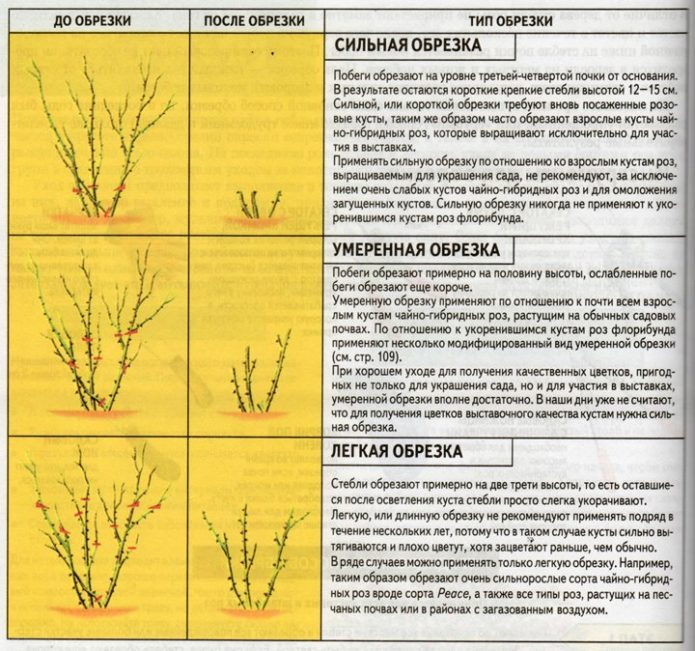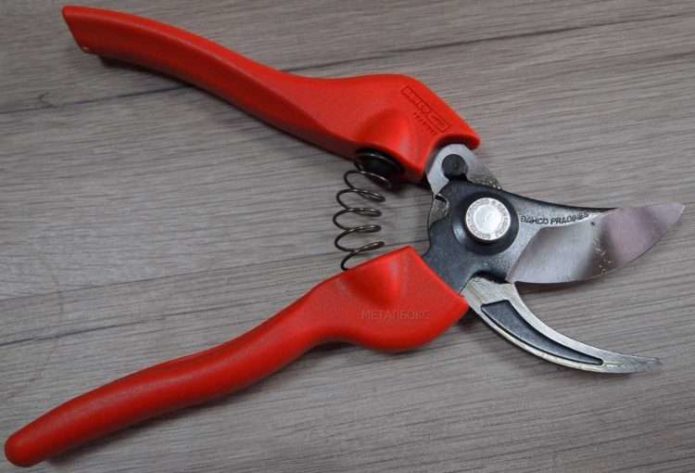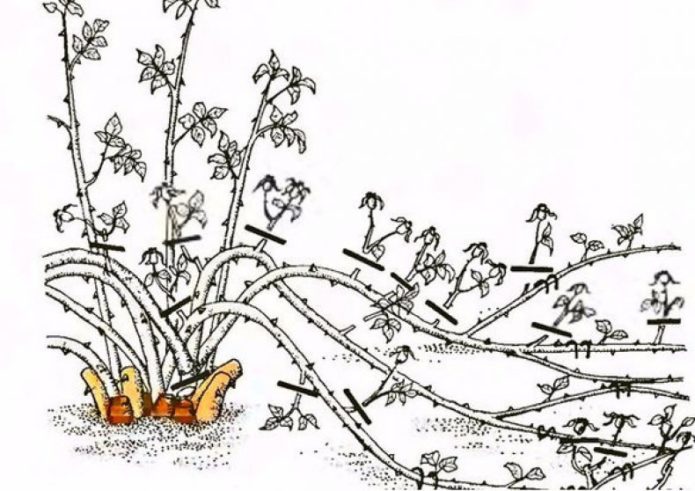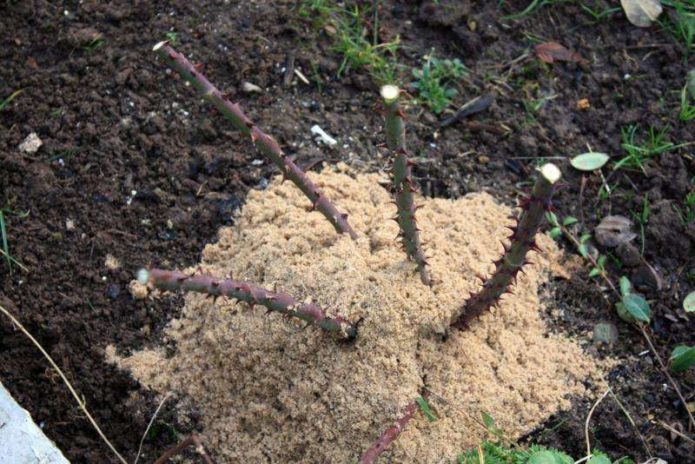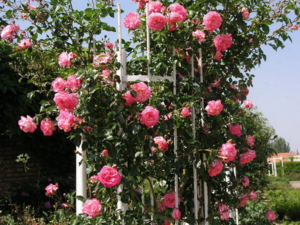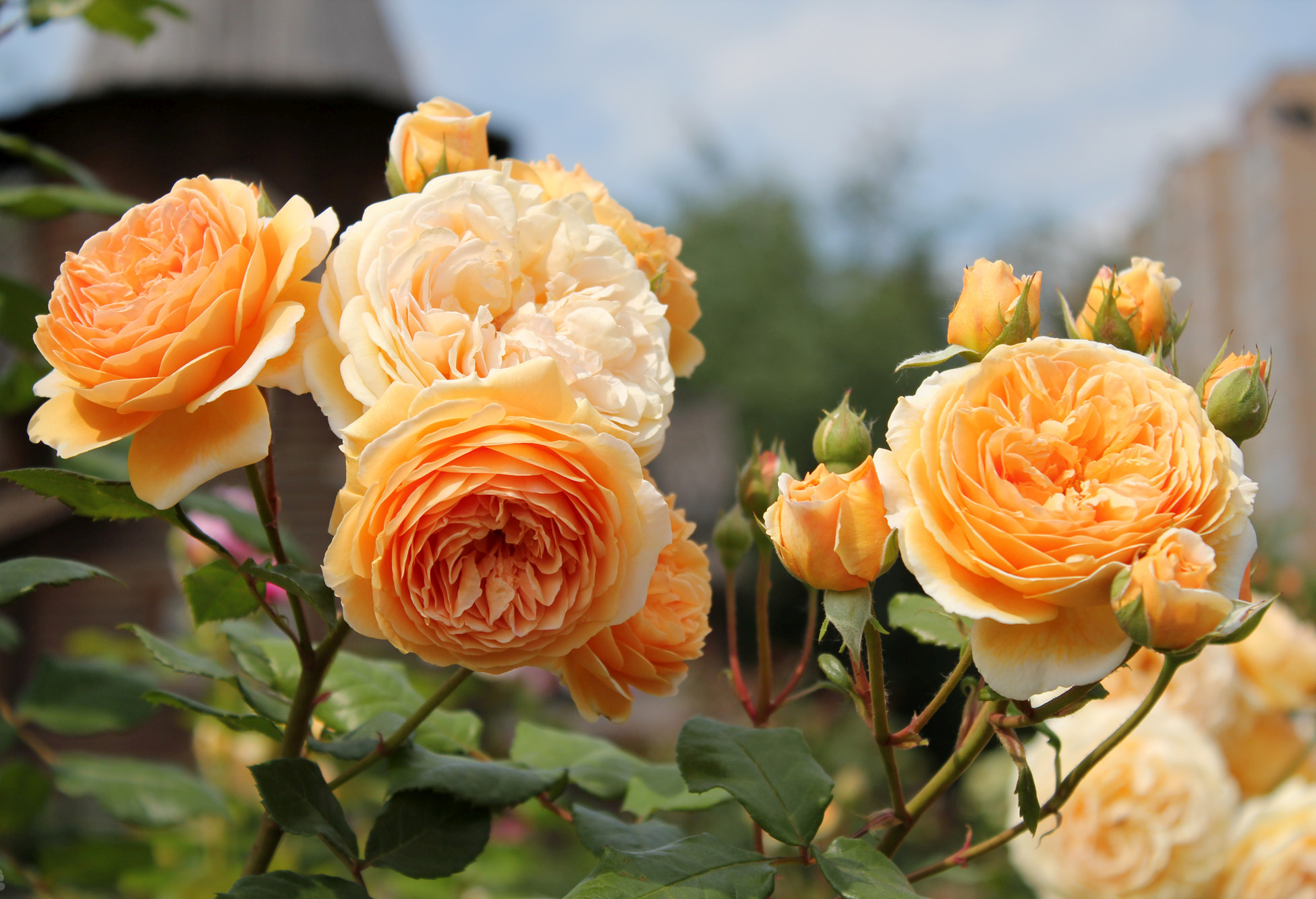They began to grow roses as ornamental plants several centuries ago. In order for them to please with flowering for a long time and grow well, competent care is needed. One of the necessary procedures is considered pruning roses in the fall. It is done in order to rejuvenate the shoots, strengthen the roots, and increase the resistance to diseases and pests. Pruned plants endure wintering more easily and begin to bloom earlier, the main thing is to correctly carry out such an operation, not to harm.
Why you need to prune plants and why they do it in the fall
Basically, roses are cut to make it easier to cover a small bush for the winter, to protect it from frost. In addition, pruning old and diseased shoots, faded buds protects the plant from the development of dangerous diseases. On each bush, 5–7 healthy young shoots should be left, which will reduce the load on the root system. Correctly processed roses next year will delight not only with early and abundant flowering, but also with large, bright inflorescences. Having prepared the plants for wintering, it is necessary to completely remove the grass, fallen leaves, debris around the bush, and dig up the soil.
Young, newly planted plants do not need pruning. It is enough for them to remove faded buds and slightly shorten the shoots. Stems and shoots are completely cut off in adult, very overgrown bushes.
There are 4 options for the procedure:
- strong pruning;
- moderate, to add splendor to the bush;
- light (for tea hybrids);
- formative.
Shoots are not cut off only in ground cover, some bush varieties and hybrids. Do not prune frost-resistant varieties that do not need shelter. They are formed and rejuvenated in spring and summer.
Pruning terms: general and by region
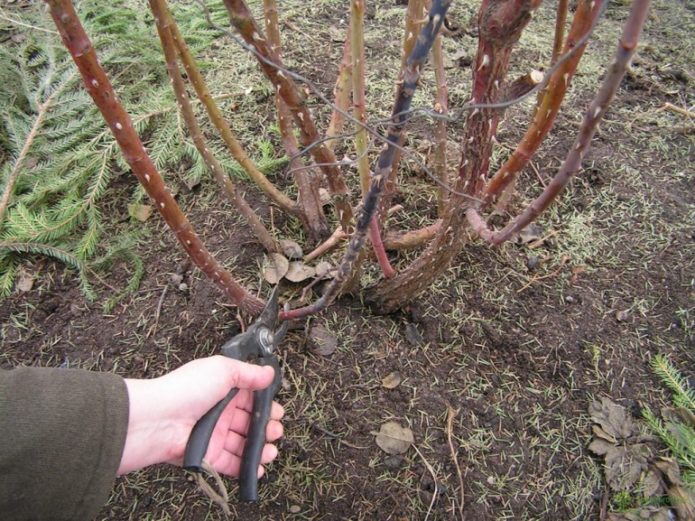
In different regions, the term for pruning roses varies, but the end of October is considered the most successful.
On average, roses are pruned from mid-October to mid-November, when the average daily temperature is around + 5 ° C. This is necessary to avoid bud awakening and plant death. It is better to carry out the procedure on a dry and sunny day, without rain or wind.
The dates may shift slightly depending on the regions. So, in the southern regions, autumn pruning is carried out from 15 to 30 November. In the middle zone of the Russian Federation, shrubs begin to be cut in mid-October, as well as in the Moscow region, Moscow. For the Leningrad region, the optimal period is considered the last decade of October and the first week of November, and for Siberia and the Urals - until September 30.
According to the lunar calendar, the most successful days for pruning roses in the fall of 2019 are:
- 1-4, 12-13, 19, 26-27, 29-31 October;
- November 11, 13-17, 20-23 and 27.
On the full moon and on the growing moon, the plant should not be cut.
Required tools
First of all, you need to stock up on a sharp cutting tool so as not to damage the shoots and stems. You need to prepare:
- durable thick gloves;
- long-sleeved clothing;
- secateurs;
- sharp garden shears with long handles;
- hacksaw.
Cutting tools are pretreated with a saturated solution of manganese. After the procedure, the cut sites must be lubricated with garden varnish or any disinfectant antifungal drug.
How to cut roses correctly: instructions
At the beginning of October, watering and loosening of the soil is stopped, late buds are removed, the plant is spud up to a height of 10 cm. Shoots are cut at an angle of 45 °, 0.5–1 cm above the bud, but only looking out of the bush.
General rules
Be sure to remove all unripe young shoots, cut off old, diseased or damaged stems, completely remove all leaves and buds. Shoots older than 3-4 years are cut almost at the root, as well as shoots growing inside the bush.
Pruning is not difficult, even for beginners in floriculture:
- To begin with, 5-7 of the strongest and strongest shoots are planned, and the rest are removed at the root.
- Healthy shoots are shortened by any of the proposed methods (light, strong, moderate), depending on the variety, age and climatic conditions.
- Exactly half is cut from annual shoots, and two-year-olds are cut at a height of two or three buds from the root.
Nuances depending on the species / variety (ordinary, park, climbing)
Traditional pruning is used for all bush and some standard varieties. It is necessary to cut off at the root all the old, dried up branches, remove the root shoots, unripe and diseased stems, and the healthy ones should be shortened and covered for the winter.
Light formative pruning is used for slow-growing types of roses. All branches are shortened by about 30%, but this procedure cannot be done annually.
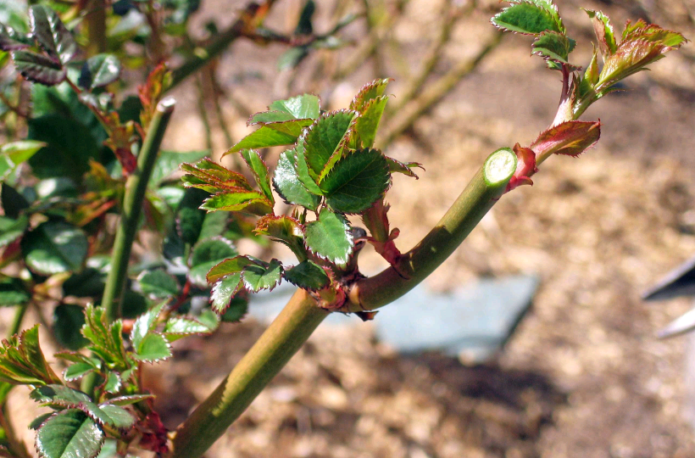
Light pruning is not carried out every year, but for certain varieties of scrubs and ground cover roses, it is the main one.
For floribunda and bush roses, moderate pruning is best, in which all healthy and strong shoots are cut in half. The diseased branches are shortened almost under the base. The nuance is that in plants of the floribunda group, all old shoots must be removed, and young shoots must be pinched from above.
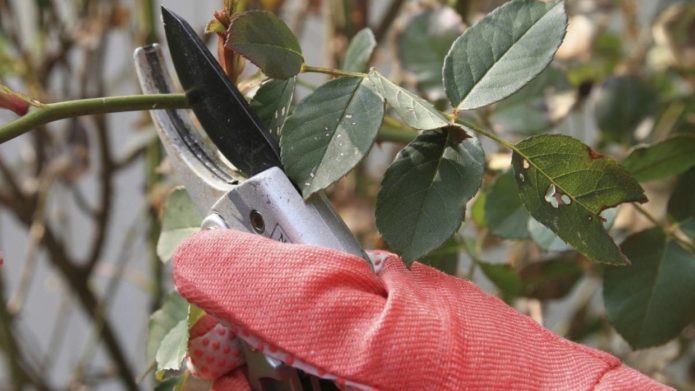
For floribunda varieties, it is advised to carry out a combined pruning in order to achieve consistent flowering.
Heavy pruning is not always used to rejuvenate some tea hybrids. This method cannot be used for floribunda and climbing rose groups.
In a polyanthus rose, all branches are cut, leaving only 7–8 main shoots, which are shortened by a third, keeping the growth of 1–2 buds. Park roses are cleaned of weak and diseased shoots, and the main branches are cut to 15 cm.
Climbing tall rambler with large inflorescences is optional to cut. It is enough to cut off damaged, diseased branches, remove old inflorescences and leaves, bend them to the ground and cover them carefully. Low climbing roses do not need pruning in autumn. Each bush should have about seven old but healthy shoots and three young ones.
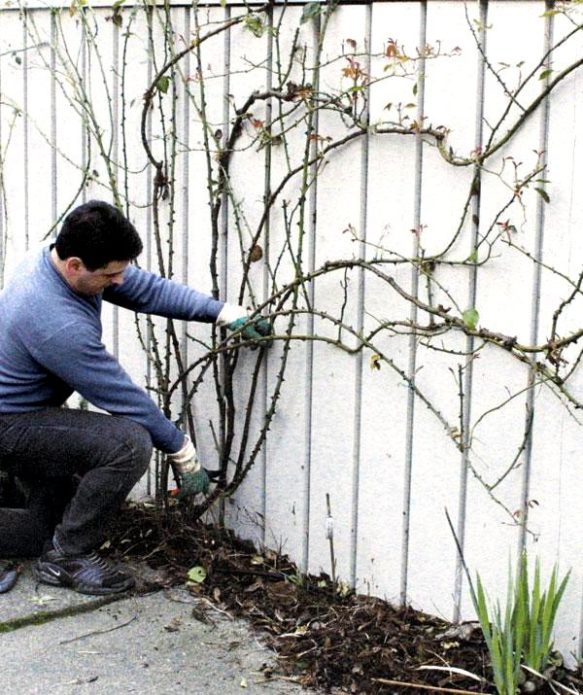
The shoots of large-flowering climbing roses are not cut off, but laid on the ground, in full length or rolled into a ring
On standard varieties, each new growth is cut at the level of 3 buds, and the lateral one - up to 1–2 buds.
Ground cover varieties have a different pruning scheme. In a young annual plant, all stems are removed in the fall, leaving only the basal processes. They are bent to the ground and fixed with staples.
The next year, half of the fixed shoots are cut off, all lateral processes are removed, leaving 2-3 buds on them. Young branches are selected from the middle of the bush and also attached to the soil.
Caring for roses after autumn pruning
After 12-14 days after the pruning procedure, the roses must be fed with phosphorus-potassium fertilizers. Watering is stopped, and at t -5 ° C, the bushes must be covered for the winter. For these purposes, you can use spruce branches, sawdust, spunbond.
Autumn pruning is necessary for almost all varieties of roses, and it is very easy to do it yourself. In the fall, sparing pruning is often carried out, and in the spring - more drastic.Some growers do not recommend removing leaves from the bush before pruning, although it is believed that last year's foliage provokes the development of diseases, weakens the plant.
